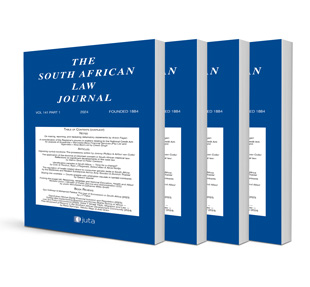The Draft Lower Courts Bill — A serious attempt to transform the civil justice system, or another window-dressing exercise?

Note
The Draft Lower Courts Bill — A serious attempt to transform the civil justice system, or another window-dressing exercise?
Author: Mohamed Paleker
ISSN: 1996-2177
Affiliations: Professor, Department of Private Law, University of Cape Town
Source: South African Law Journal, Volume 141 Issue 3, p. 437-454
https://doi.org/10.47348/SALJ/v141/i3a1
Abstract
The magistrates’ courts are often the first point of access to the civil justice system and are therefore crucial for ensuring access to justice. The Magistrates’ Courts Act 32 of 1944 (‘the MCA’) regulates their powers, functions, and procedures. While the legislation has been amended several times, there is a growing consensus that it needs to be replaced. This note examines some aspects of the draft Lower Courts Bill, which the Department of Justice has proposed as a replacement for the MCA. It discusses some of its positive features, identifies gaps in the proposed legislation, and provides suggestions for improving it.